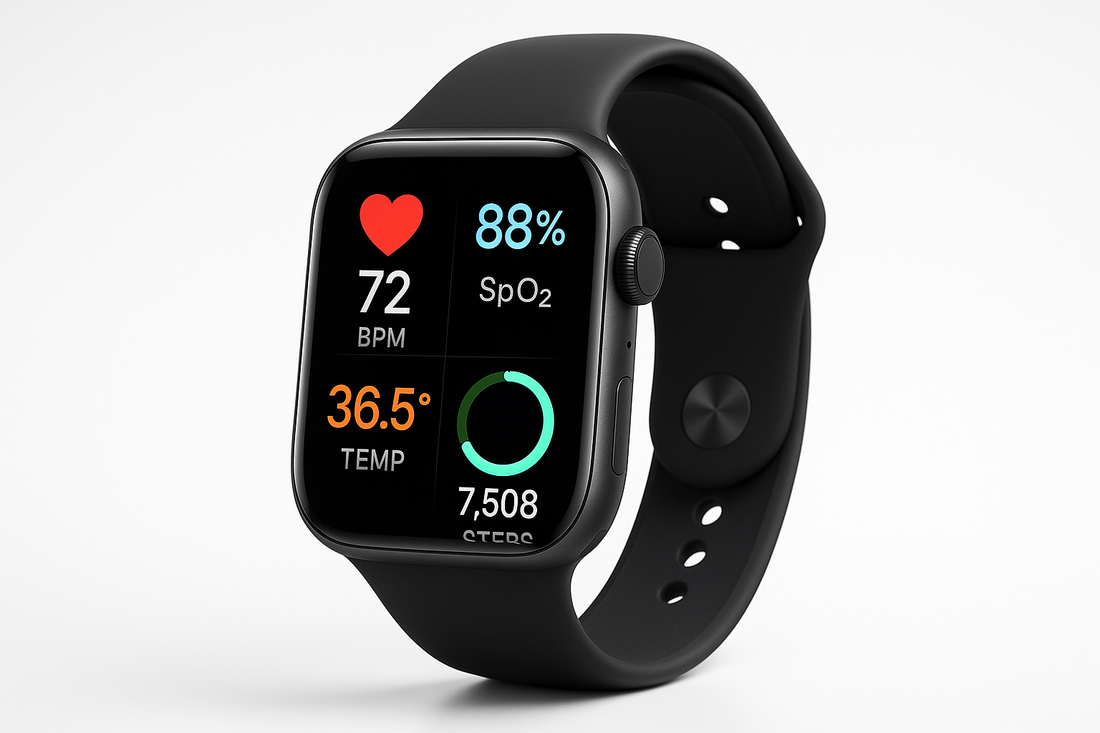Wired for Wellness: How Wearable Tech Is Transforming the Way We Live
A few years ago, wearable technology was just an accessory — a step counter, a calorie tracker, or maybe a flashy digital watch. Fast-forward to today, and these once-basic devices have evolved into powerful tools that are actively reshaping how we understand, manage, and take control of our health.
From tracking heart rate and sleep cycles to monitoring stress, oxygen levels, and even posture, wearable devices have become far more than fitness gadgets. They're transforming into proactive health assistants, always on, always analyzing, and always working silently in the background to keep us one step ahead of potential health issues.
🧠 The Evolution of Wearable Technology: From Step Tracker to Life Saver
The journey of wearable tech began with simplicity: pedometers and calorie counters. As tech advanced, fitness bands became smarter. They could sync with your phone, measure heart rate, and even gently nudge you when you’d been sedentary too long.
Then came the game-changer: the smartwatch. Suddenly, we had health monitoring, communication tools, and mini-computers — all on our wrists. With continuous innovation, brands like Apple, Fitbit, Garmin, Oura, and WHOOP began rolling out new features that blurred the line between lifestyle and medicine.
Today’s wearables aren’t just for fitness junkies. They’re for everyone — from the busy parent managing stress and sleep, to the senior citizen monitoring irregular heart rhythms, to the athlete optimizing recovery after intense training.
🏥 Beyond Fitness: Wearables as the Future of Preventive Healthcare
What makes wearable technology revolutionary isn’t just its ability to track data — it's how that data is used. We're entering an era where wearables function like early warning systems, alerting users to potential health issues before they become serious.
Imagine this:
Your smartwatch detects an irregular heartbeat while you’re sitting at your desk.
A ring on your finger senses abnormal sleep patterns and hints at burnout.
Your fitness tracker picks up a decline in your oxygen saturation, possibly indicating a respiratory issue before symptoms arise.
These are not hypotheticals. These are real-life use cases happening right now. According to a study by the American Heart Association, wearables have already helped thousands of users identify atrial fibrillation — a serious but often silent heart condition.
And it doesn’t stop there.
🔄 Chronic Disease Management, Reimagined
For people with conditions like:
Diabetes, Hypertension. Sleep apnea, & Anxiety disorders
…wearables can offer real-time data, reminding users to take medication, flagging irregular readings, and even syncing with telehealth platforms for remote consultations.
The shift from reactive to proactive healthcare is happening, and wearable tech is leading the charge.
🌐 Bridging Wellness and Clinical Care
Healthcare is notoriously complex, expensive, and often inaccessible — especially when it comes to preventive care. But wearable tech is starting to bridge that gap by:
Democratizing data: Anyone with a smartwatch can now access key biometrics anytime, anywhere.
Enhancing doctor-patient communication: Doctors can analyze months of wearable data to spot trends, rather than relying on snapshot visits.
Enabling remote care: With wearables and telehealth platforms, care can happen from home — not just at the clinic.
This is especially important in a post-pandemic world, where digital health tools are no longer “nice to have,” but essential.
🚀 Where Are We Headed? The Future of Wearable Health Tech
We’re just scratching the surface of what wearables can do.
Here’s what’s on the horizon:
Non-invasive glucose monitoring for diabetics
Blood pressure monitoring without a cuff
Mood and mental health tracking via neural feedback
AI-driven diagnosis tools that analyze patterns over months
Micro wearables embedded in clothing or skin patches
And beyond physical health, wearables are entering the world of mental wellness. Devices now help track breathing patterns, suggest guided meditations, and identify triggers for anxiety or panic attacks — creating a holistic view of your well-being.
✨ The Human Side of Technology
What’s most beautiful about this evolution isn’t the tech itself — it’s the empowerment it offers.
You’re no longer waiting on a doctor's appointment to know something’s off. You’re no longer wondering if that stress is taking a toll on your body. You’re no longer guessing how well you slept last night. You know — and that knowing gives you control.
It gives you choices.
📝 Final Thoughts: Wearables Are Not Just Devices — They're Companions in Your Wellness Journey
Wearable technology isn’t just about numbers on a screen. It’s about awareness, proactivity, and control. It’s about giving people the tools to better understand their bodies, catch issues early, and make informed decisions about their health.
As we continue to blend innovation with compassion, one thing is clear: the future of health is personal. And it's wearable.
Whether you're chasing fitness goals, managing a condition, or simply trying to live a healthier life — your next health breakthrough might be just a glance at your wrist away.
